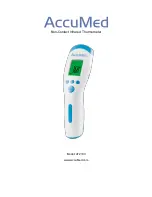6
(NS) Networked Systems operation.
There is a high-level supervisory device installed and used in this
configuration.
In this application, a Viconics VWG and Jace-driver are the network coordinators for all thermostats
associated to the system and reporting their data point values.
Each VZ76xx RTU thermostat and its associated VZ72xx zone thermostats will use the same PAN ID and
channel as the Viconics VWG and Jace-driver. The range of PAN ID on all thermostats to use is 1 to 250.
This range is reserved for the networked system (NS) operation.
Smallest System Supported
Largest System Supported
Number of Zones
Number of RTUs
Number of Zones
Number of RTUs
Single Network trunk of
128 nodes maximum
1 ZN reporting to
1 RTU Minimum
126 ZN reporting to
1 RTU Minimum
63 ZN reporting to
63 RTU Maximum
In this configuration, there is a supervision device installed. The system will still fully operate in stand-alone
mode, but allows for a remote access to thermostat objects. It is seamlessly integrated into Niagara AX
®
Workbench environment with the use of the Viconics JACE communication device and its associated
driver.
Some added functions include:
-
Detailed system graphics referred to as GUI’s which stands for Graphic User Interfaces
-
Capacity to run remote trends, logs and diagnostics
-
Capacity to use remote alarms for system events such as failures or maintenance
-
Advanced and centralized energy management functions
-
Remote
scheduling
-
Global outdoor temperature for all thermostats
-
1C) Local Zone with Terminal Reheat or without Terminal Reheat
Including or excluding use of terminal reheat is dictated by design criteria’s of the installer. The use of
terminal reheat in a VAV system will always result in a more comfortable set-up for the occupants of the
space. However this may not be practical from a cost standpoint or regional requirements. System designs
will vary from Northern to Southern and Eastern to Western geographical locations because of the specific
regions peak load requirements.
In colder climates, VAV system heating operation without the use of terminal reheat typically always results
in colder outside walls. Although the zone dry-bulb temperature may be well maintained, it may be possible
for occupants not to be comfortable simply because of the low outside wall temperate.
Also, in the perimeter zones, the delivery process of the heating capacity from the ceiling is not as efficient
as when delivering the heating load directly where the losses occur such as in the case of a perimeter
electric baseboard or perimeter hydronic baseboard.
In regions where the heating load is small and required for only a small portion of the year, a properly sized
up zone VAV can deliverer the required heating demand and insure comfort without the use or terminal
reheat. However it is important to design the zone ductwork and area diffusers to be the most efficient with
air delivery close to the outside walls.
In certain problematic cases where air delivery may be an issue, the use of fan powered VAV units may
reduce the occupant discomfort by providing constant airflow to the zone and maximizing the air delivery
process.


















